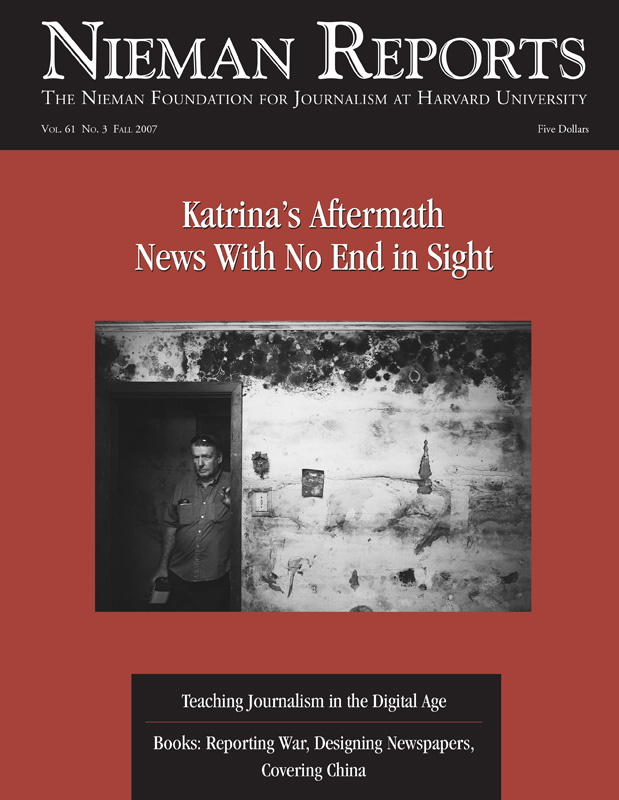Hurricane Katrina is the most difficult assignment of my almost 29-year career with The Associated Press. Three days after the storm flooded the city, it became very clear that this would essentially be the last story I would cover. There have been only a couple of brief assignments away from Southern Louisiana since August 29, 2005, and there is no reason to believe this will be any different in the future. This story will be years in the telling.
Telling this story has been a challenge from the start. Even though specific challenges it poses have evolved, they never seem to lessen. Logistics, once overwhelming, are now just plain difficult at times, as all of us deal with competing pressures of fixing what is broken in our personal lives [see editor’s note] and continuing to convey to others what doesn’t work in theirs. Usually in our business, we deal with only one of these dimensions at a time, given that our assignments about disaster usually take us far from home. And even if we face danger and discomfort, those we love are safe and cared for, so we’re able to approach what we do each day with undivided attention. Living in the intersection of family and work can, at times, feel like an impossible place to be. Both are full-time jobs; each requires daily attention, and each influences the other.
For these reasons, and others, Katrina remains a unique assignment.
From a photojournalist’s perspective, the ongoing struggle involves capturing that telling image that conveys the scope of human suffering and destruction. Trying to do this every day taxes the limits of my ability as no other story ever has. There has been no break from Katrina’s devastation in two years, as we work still on most of the same stories we did in the early days of the storm—tracking difficulties people are having with housing and crime and safety, with levees breaking and being rebuilt, with vanishing neighbors and empty neighborhoods, with insurance companies and financial aid. The one image that is behind us is the water—rushing through our streets and into our homes. But no one can assure us it won’t be there again.
What I now know—two years after Katrina arrived in New Orleans—is that even as the city’s population has shrunk and attention to its plight has waned, the stories related to Hurricane Katrina only continue to expand and our resolve to cover them strengthens.
Bill Haber is a photographer with The Associated Press; he started with the AP in Dallas, Texas and has been in New Orleans since 1984.


